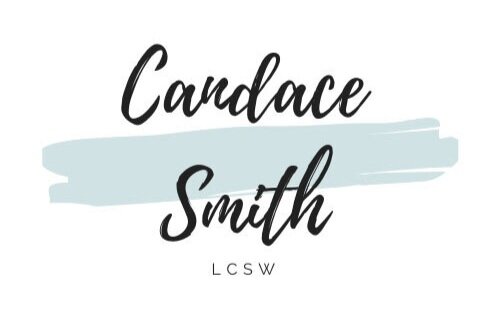Some Reasons to Try DBT Therapy
You Have a Hard Time Regulating Your Emotions - You go from
Do You Sometimes Act in Ways that Make You Feel Bad about Yourself?
Do You Have Trouble with Relationships?
DBT Treatment can help you understand
Function #1: Enhancing capabilities. Within DBT, the assumption is that patients with BPD either lack or need to improve several important life skills, including those that involve (a) regulating emotions (emotion regulation skills), (b) paying attention to the experience of the present moment and regulating attention (mindfulness skills), (c) effectively navigating interpersonal situations (interpersonal effectiveness), and (d) tolerating distress and surviving crises without making situations worse (distress tolerance skills).15 As such, improving skills constitutes one of the key functions of DBT. This function usually is accomplished through a weekly skills group session, consisting of approximately 4 to 10 individuals and involving didactics, active practice, discussion of new skills, as well as homework assignments to help patients practice skills between sessions. Function #2: Generalizing capabilities. If the skills learned in therapy sessions do not transfer to patients' daily lives, then it would be difficult to say that therapy was successful. As a result, a second critical function of DBT involves generalizing treatment gains to the patient's natural environment. This function is accomplished in skills training by providing homework assignments to practice skills and troubleshooting regarding how to improve upon skills practice. In individual therapy sessions, therapists help patients apply new skills in their daily lives and often have patients practice or apply skillful behaviors in session. In addition, the therapist is available by phone between sessions to help the patient apply skills when they are most needed (e.g., in a crisis). Function #3: Improving motivation and reducing dysfunctional behaviors. A third function of DBT involves improving patients' motivation to change and reducing behaviors inconsistent with a life worth living. This function primarily is accomplished in individual therapy. Each week, the therapist has the patient complete a self-monitoring form (called a “diary card”) on which he or she tracks various treatment targets (e.g., self-harm, suicide attempts, emotional misery). The therapist uses this diary card to prioritize session time, giving behaviors that threaten the patient's life (e.g., suicidal or self-injurious behaviors) highest priority, followed by behaviors that interfere with therapy (e.g., absence, lateness, noncollaborative behavior), and behaviors that interfere with the patient's quality of life (e.g., severe problems in living, unemployment, or severe problems related to Axis I disorders). After prioritizing the behavioral targets for a given session, the therapist helps the patient figure out what led up to the behavior(s) in question and the consequences that may be reinforcing or maintaining the behavior(s). The therapist also helps the patient find ways to apply skillful, effective behavior, solve problems in life, or regulate emotions. In terms of enhancing motivation, the therapist actively works to get the patient to commit to behavior change, using a variety of “commitment” strategies.1 Function #4: Enhancing and maintaining therapist capabilities and motivation. Another important function of DBT involves maintaining the motivation and skills of the therapists who treat patients with BPD. Although helping multiproblematic BPD patients can be stimulating and rewarding, these patients also engage in a potent mix of behaviors that can tax the coping resources, competencies, and resolve of their treatment providers (i.e., suicide attempts, repeated suicidal crises, behaviors that interfere with therapy). As a result, one essential ingredient of an effective treatment for BPD patients is a system of providing support, validation, continued training and skill-building, feedback, and encouragement to therapists. To address this function, standard DBT includes a therapist consultation-team meeting, for which DBT therapists meet once per week for approximately 1 to 2 hours. The team helps therapists problem-solve ways to implement effective treatment in the face of specific clinical challenges (e.g., a suicidal patient, a patient who misses sessions). In addition, the team encourages therapists to maintain a compassionate, nonjudgmental orientation toward their patients; monitors and helps reduce therapist burnout; provides support and encouragement; and sometimes employs structured training/didactics on specific therapeutic skills. Function #5: Structuring the environment. A fourth important function of DBT involves structuring the environment in a manner that reinforces effective behavior/progress and does not reinforce maladaptive or problematic behavior. Often, this involves structuring the treatment in a manner that most effectively promotes progress. Typically, in DBT, the individual therapist is the primary therapist and is “in charge” of the treatment team. He or she makes sure that all of the elements of effective treatment are in place, and that all of these functions are met. Structuring the environment may also involve helping patients find ways to modify their environments. For instance, drug-using patients may need to learn how to modify or avoid social circles that promote drug use; patients who self-harm sometimes need to learn how to make sure that their partners or significant others do not reinforce self-harm (i.e., by being overly soothing, warm, or supportive). In DBT, the therapist normally has the patient modify his or her environment, but at times, may take an active role in changing patients' environments for them (e.g., if the environment is overwhelming or too powerful for the patient to have a reasonable degree of influence).1
ARE YOU OR A LOVED ONE HAVING A HARD TIME REGULATING YOUR EMOTIONS? DO YOU FIND YOURSELF ACTING IN WAYS THAT MAKE YOU FEEL BAD ABOUT YOURSELF? IS IT HARD FOR YOU TO BUILD AND/OR MAINTAIN RELATIONSHIPS? DO YOU FEEL STUCK IN DYSFUNCTIONAL PATTERNS AND WANT CHANGE? IF YOU ANSWERED ‘YES’ TO ANY OF THESE, AND ARE TIRED OF YOUR EMOTIONS CONTROLLING YOUR BEHAVIOR, DBT IS TREATMENT THAT CAN HELP. EMAIL, TEXT OR CALL TODAY AUSTINDBT@YAHOO.COM (512)680-0425

